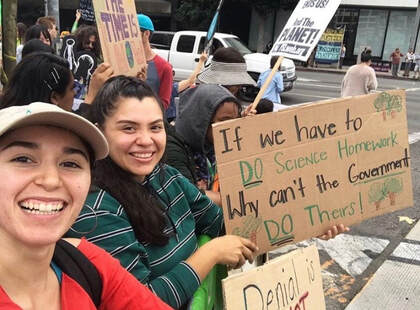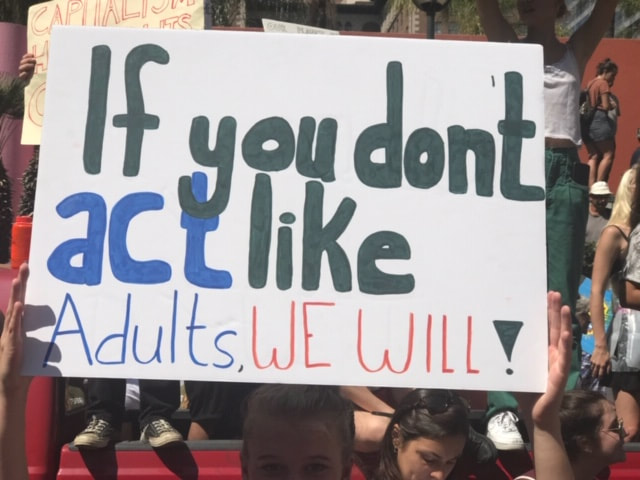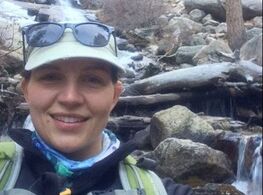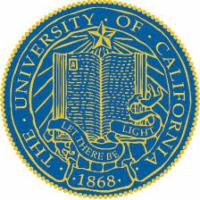|

Expert Panel’s Startling Recent Reports
The Intergovernmental Panel on Climate Change, the world’s leading authority on climate change, has put out several major reports since 1990. When not completely ignored by the American public, they’ve been met with a collective shrug. At least, that was the case until last year. 2018 was different. Between the startling report itself and the extraordinary number of natural disasters in the United States in recent years, the public suddenly paid closer attention. UN Secretary-General Antonio Guterres described the “Special Report on Global Warming of 1.5C” as “an ear-splitting wake-up call to the world.” It stated emphatically that we must reduce our fossil fuel consumption by 45% in twelve years (from 2010 levels) and then reach “net zero” around 2050, if we want to have any chance of keeping global warming to 1.5C. That's s the ideal target agreed upon in Paris in 2015, since beyond that the effects of warming are far more severe, even catastrophic, as the report made clear. A 45% reduction in twelve years is an extremely difficult target to reach, given current rates of fossil fuel consumption. In fact, according to a subsequent report from the world’s leading climate science organizations, the “United in Science” study released this September for the UN Climate Action Summit, the commitments countries have made to date are woefully inadequate. They must be increased three-fold, possibly five-fold, in order for the 1.5C target to be reached. As things stand, we are heading for an inconceivable rise in average global temperatures of around 3.1C-(5.6F) by 2100. The report is not all bleak, however. It argues that the gap can still be reduced, and global heating kept to a safe level. To do so, however, there must be a dramatic and rapid shift in current commitments and actions. And there is, in fact, a great deal going on, both internationally and within the US, despite the Trump administration’s refusal to even acknowledge the crisis. In our next issue, we’ll look at what is being done in California and around the nation, both by state governments and private utilities. It’s a complicated, but promising picture, given the dramatic decline in cost for solar and wind energy generation. UC Fossil Fuels Divestment Largest to Date
The University of California announced September 17th that it was divesting entirely from fossil fuel companies. The decision followed six years of vigorous campaigning by Fossil Free UC, an organization of students, faculty, staff and alumni, who argued that it was immoral for the UC to continue its investment, given the climate emergency. Top UC investment officers insisted, however, that their decision was strictly financial.
So far over 40 American colleges have divested of at least some fossil fuel stocks, including Stanford, the University of Massachusetts, and Georgetown. But with its endowment of $13.4 billion and its $70 billion pension fund, the UC action will be the largest public university ever to divest, and the decision is expected to reverberate throughout the academic world and beyond. After the faculty statewide voted in July in favor of divestment, Bill McKibben, one of the founders of the international movement, said such a decision ““would be one of the biggest moments in (our) seven-year history.” In a Los Angeles Times op-ed, Richard Sherman and Jagdep Singh Bacher, the UC’s top two investment officers, said that the decision was based entirely on perceived financial risk and not in response to activist demands. They pointed out that the UC had been phasing out its fossil fuel investments for several years, and said that they simply believe “that there are more attractive investment opportunities in new energy resources than in old fossil fuels.” Fossil Free UC campaigners, for their part, approached the investments primarily from a moral perspective. As campaigners Emily Williams and Theo LeQuesne put it, “If extraction of more fossil fuels in a time of climate emergency is a moral obscenity, then investments in extraction is complicity. For decades, the UC padded its portfolio with investments in the industry that has sickened, maimed, and degraded communities in California and around the world.” However different the approaches, the same end has been achieved. As Bacher and Sherman put it, “While our rationale may not be the moral imperative that many activists embrace, our investment decision-making process leads us to the same result.” Go Fossil Free, the umbrella organization for the groups working on divestment, claims that worldwide over a thousand organizations have now divested wholly or in part since the campaign began in 2012. Besides universities and colleges, they include non-profits, churches, foundations, public pension funds, and city governments. Los Angeles, Seattle, Portland, San Francisco, Minneapolis, and New York have all divested, as have several major European capitals. Ireland became the first nation to do so this past summer. Investment funds worth over eleven trillion dollars have now divested some or all of their fossil-fuel holdings. While the total does not, of course, represent how much money is being pulled out of fossil fuels, just how much the funds manage, it does indicate the enormous financial clout of those who are saying “no” to fossil fuels. Is it working? Goldman Sachs seems to think so. In a recent report, it blamed divestment for the steep drop in coal production and warned that oil companies need to make major changes if they don’t want to end up in similar straits. Finally, if you’re wondering about CalPERS and CalSTRS, the largest two pension plans in the nation with assets totaling over $500 billion, they both have portfolios with considerable holdings in fossil fuel companies. Fiona Ma, the state Treasurer, is calling on CalSTRS to divest, and forty students appeared before its board on Sept. 5 asking for the same.  Student's from West LA College SAVE club protesting the destruction of the Amazon rainforest Student's from West LA College SAVE club protesting the destruction of the Amazon rainforest
West’s SAVE Protests...and Gardens In our last issue we reported on EcoAdvocates, the student environmental group at Valley. We’re happy to report that West LA has had a similar group for four years. It’s called SAVE (Sustainability, Action, and Vision for the Environment), and under the leadership of Alan Cooper and Sarah Solis members go on hikes and camping trips, hold cleanup days on campus and participate in World CleanUp Day at the coast. For three years they organized a campus Earth Day Fair. SAVE also maintains three garden beds at West, where they grow vegetables for the school’s food pantry, and learn the basics of gardening and composting. Alan calls it “a great way to give back to those in need while also ensuring that some of the food is organically grown.” Alan says the ultimate purpose of SAVE is educational. He finds West students passionate about the environment but uncertain as to what to do. This year the club is trying to provide some guidance in the area of recycling, with members working on a community program about e-waste and other harmful recyclables. Alan noted that “There’s a lot of room for people to reduce their eco footprint with relatively minor changes in their life. We have to move collectively, and teaching people to be more mindful in their day-to-day decisions can go a long way.” SAVE acts globally as well as locally. On Sept. 27, members attended a demonstration in front of the Brazilian Consulate in Los Angeles, protesting that government’s Amazon land policies, which have led to catastrophic fires this year. Cooper said, “What's happening in Brazil is horrible, and it’s still happening, but the outrage when this first came to light is already fading. Activism is really about getting people to keep focused on this issue. The Amazon is one of the most bountiful sources of biodiversity left in the world, and when it's gone, we will never see its like again.” SAVE’s adviser, Professor Vered Mirmovitch, who has been guiding the club since its inception, reports that many club officers have successfully transferred to UC and CSU’s, and some of those who have graduated continue to be involved in environmental education. Alan intends to transfer to Cal State Humboldt to study forestry and become a park ranger, while Sarah is working on West’s new Climate Science degree before transferring to a UC. "Aquaponics" at East LA College
If you’re not a science professor, the term “aquaponics” might be a bit of a head-scratcher. Aquaculture we hear about a lot, and hydroponics a little. But aquaponics? What is that? It turns out to be just the combination of the first two in a symbiotic environment. In short, raising fish and plants at the same time. In a traditional aquaculture system the fish excretions raise the toxicity level of the water and have to be removed as discharge, but in aquaponics the water is fed into a hydroponic system where the by-products are broken down by bacteria and then used as nutrients by the plants. The cleaned water is then circulated back to the aquaculture system. If widely practiced, aquaponics would allow for increases in food production, as the space demands of traditional agriculture are much reduced. Sound intriguing? If you’d like to see for yourself, visit East LA College, where such a system was implemented just this past summer. East’s Aquaponics Garden Science Learning Center is now only the second such garden lab in the California community colleges. The program is part of the Jardin de STEM Project, which aims to increase the number of Hispanic students pursuing STEM careers, and the center will be used by faculty to teach biology, chemistry, and the physics of food science, among other STEM subjects. In fact, professors of engineering, architecture, chemistry, and geography are already incorporating garden lab activities into their courses. Other discipines will follow, and eventually a lesson plan manual will be developed. The aquaponics system is being maintained by students, with one of their main tasks being the careful monitoring of the water in both systems. To help them get it all right, three faculty volunteers are assisting: entomologist Dr. Kirk Olsen; geologist and fish farming specialist, Randy Adsit; and master gardener Mark Swicegood. Director Robert West tells us that the garden will provide vegetables for East’s ASU food pantry, which helps to meet lower income students’ needs. In fact, students are now harvesting their fall crop of cucumber, zucchini, onions, peppers, lettuce, and tomatoes in order to make way for winter crops. The Jardin de STEM Project is funded by a large Title V grant, and the Roybal Foundation partnered with East on the center. West also noted how helpful the administration and the Facilities Dept. have been in making the garden lab a reality. As for the future, he says “We hope to establish our own practices and generate continued improvement in collaboration with other such projects in our region.” A trip to see the aquaponics systems at the Huntington Gardens is upcoming. |







